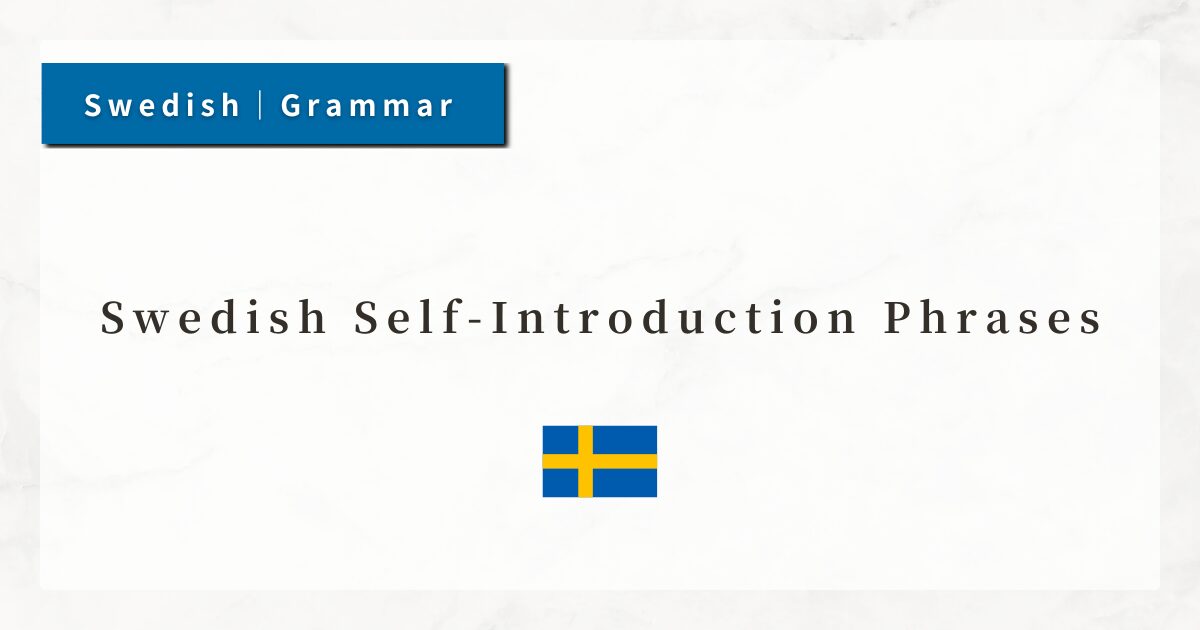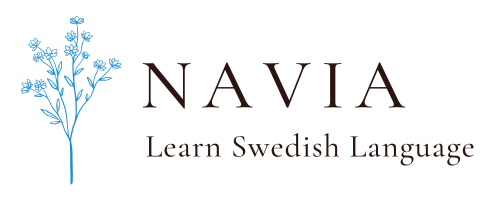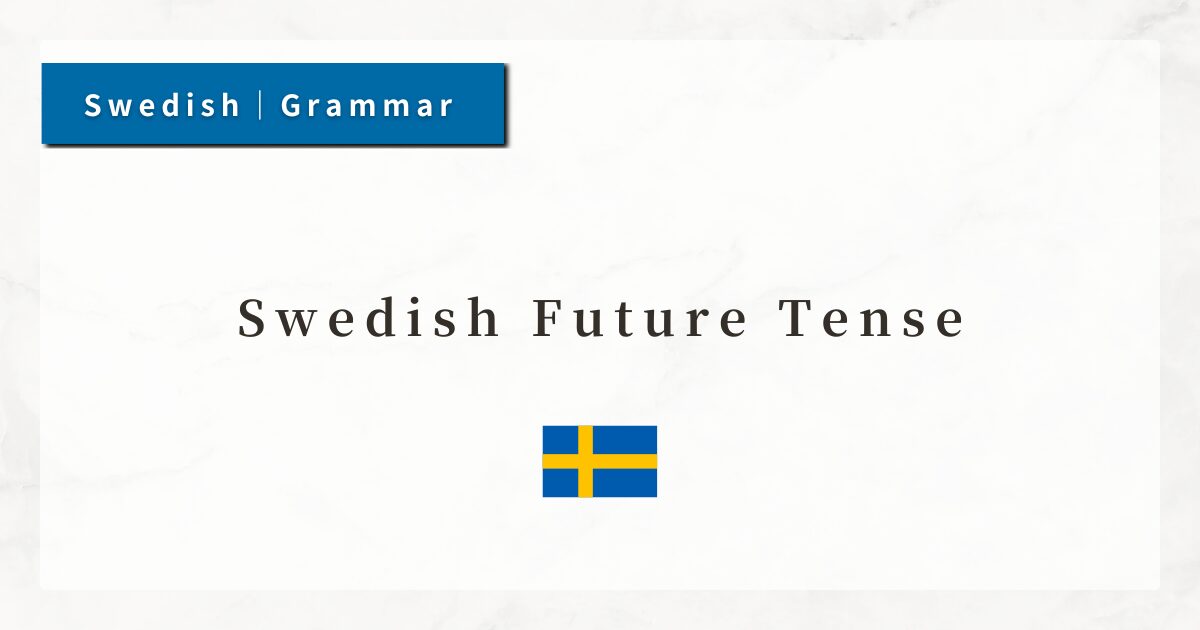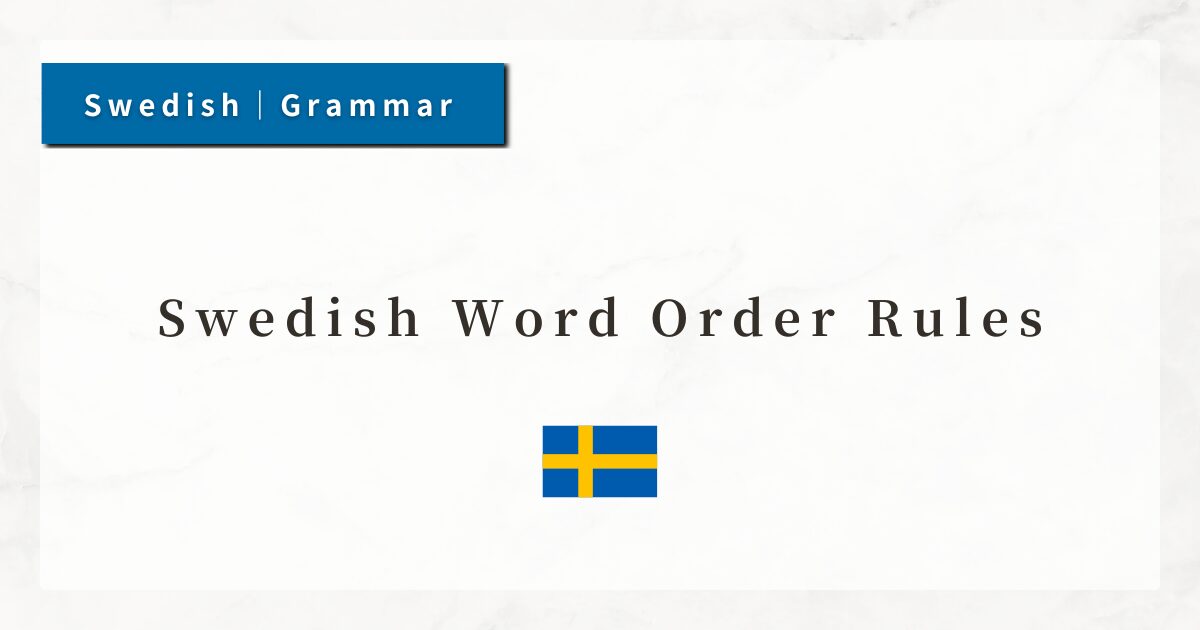#23 Swedish Self-Introduction Phrases|How to Say Your Name, Origin, and Greeting

When speaking Swedish for the first time with someone, expressions such as “Hello,” “My name is…,” and “Where are you from?” are essential for making a proper self-introduction.
Just like in English or Japanese, Swedish also has set phrases commonly used for self-introductions. By mastering these expressions, you not only make a polite and positive impression but also start conversations more smoothly.
In this lesson, I will explain the basic Swedish phrases used for self-introductions.
1. Stating Your Name
The foundation of a self-introduction is telling someone your name. In Swedish, the expression used is:
Jag heter … | My name is …
Here, heter is the present tense of the verb heta (to be called), which literally means “to be named.”
Examples:
- Jag heter Yuki. (My name is Yuki.)
- Vad heter du? (What is your name?)
To ask someone’s name, use “Vad heter du?” which is equivalent to English “What is your name?”
2. Stating Your Origin
The next step is telling someone where you are from.
Jag kommer från … | I am from …
This expression uses the phrasal verb komma från (to come from). Pay attention to the preposition från, which means “from”.
Examples:
- Jag kommer från Japan. (I am from Japan.)
- Jag kommer från Tokyo. (I am from Tokyo.)
To ask, say:
- Var kommer du ifrån? (Where are you from?)
This literally means “From where do you come?” A slightly more casual variation is “Varifrån kommer du?” which carries nearly the same meaning.
3. Stating Your Occupation or Status
Swedish uses the verb är (to be) to express one’s occupation or role.
Jag är … | I am …
Unlike English, Swedish does not use an article (a/an) when stating professions. For example, instead of “I am a teacher,” you simply say “Jag är lärare”
Examples:
- Jag är student. (I am a student.)
- Jag är lärare. (I am a teacher.)
- Jag är forskare. (I am a researcher.)
Another feature of Swedish is that many professions are gender-neutral and not distinguished by grammatical gender.
4. Stating What You Study
To make conversation more engaging, you can also mention what you study.
Use the verb studera (to study).
Jag studerar … | I study … / I am studying …
Examples:
- Jag studerar svenska. (I study Swedish.)
- Jag studerar biologi. (I study biology.)
Svenska here is the noun “Swedish (language).” Unlike in English, names of languages in Swedish are written with a lowercase initial letter.
5. Greeting Someone for the First Time
In Swedish, the standard expression for “Nice to meet you” is:
Trevligt att träffas. | Nice to meet you.
The literal meaning is “Nice to meet you,” and it is a polite phrase often added at the end of a first-time greeting.
Example dialogue:
- Hej! Jag heter Anna. (Hello! My name is Anna.)
- Hej Anna! Jag heter Erik. Trevligt att träffas.
(Hello Anna! My name is Erik. Nice to meet you.)
6. Summary
- Jag heter … : My name is …
- Vad heter du? : What is your name?
- Jag kommer från … : I am from …
- Jag är … : I am … (occupation/role)
- Jag studerar … : I study …
- Trevligt att träffas. : Nice to meet you.





